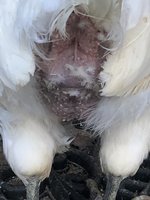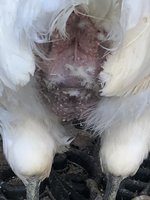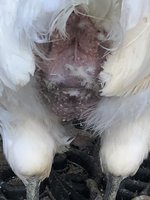ChattyChickens4Life
OCD (Obsessive Chicken Disorder)
- Oct 1, 2017
- 908
- 898
- 222
We have 6 chickens - 2 Silkies and 4 EEs. We had noticed that all 4 EEs were missing feathers around their vents (some more than others) and also around the base of their tail feathers. Sometimes there was blood, but other than that there didn't seem to be any signs of irritation. We had pretty much ignored it because they all ate, drank, layed, and played around fine. However recently, egg production has severely decreased. When we would usually get 3 or 4 eggs a day from them, we are now only get 1 or maybe 2. Other than that, they all have high energy, eat well and drink plenty. They get treats such as lettuce, mealworms, tomatoes, strawberries, and cracked corn. They usually have access to oyster shells as well. Any ideas? Thanks so much!








